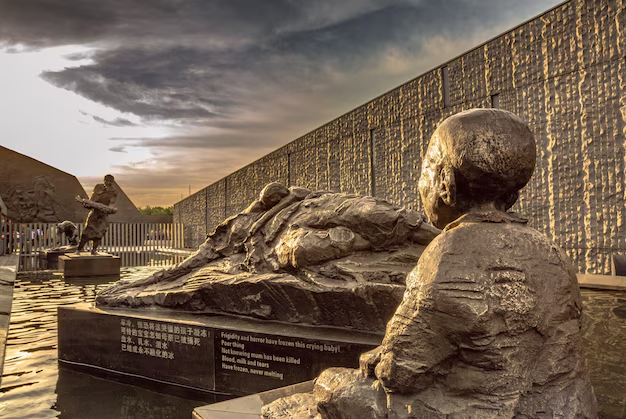Laoshan Mountain, located in Qingdao, Shandong Province, China, is a stunning natural and cultural gem that attracts travelers seeking both adventure and tranquility. Known for its lush greenery, Taoist heritage, and breathtaking coastal views, Laoshan offers a perfect blend of scenic beauty and spiritual exploration. Whether you’re a hiker, a history enthusiast, or simply looking to escape the hustle and bustle of city life, this travel guide will help you plan an unforgettable trip to Laoshan Mountain.








A Travel Guide to Laoshan Mountain
Getting There
Laoshan Mountain is about 30 kilometers northeast of Qingdao’s city center, making it an easy day trip or weekend getaway. Here are your options:
By Public Transport: Take Bus No. 304, 110, or 383 from Qingdao’s downtown area (like the Railway Station or Zhongshan Road) to the Laoshan Scenic Area. The ride takes about an hour and costs around 5-10 RMB.
By Taxi or Rideshare: A taxi or Didi (China’s equivalent of Uber) from central Qingdao to Laoshan will cost approximately 60-100 RMB, depending on traffic and your exact starting point.
By Car: If you’re driving, take the Qingyin Expressway (G20) and follow signs for the Laoshan Scenic Area. Parking is available near the main entrances.
The best time to visit is spring (April-May) or autumn (September-October) when the weather is mild, and the scenery is at its peak with blooming flowers or vibrant foliage.
Exploring Laoshan Mountain
Laoshan is a sprawling area with multiple trails, temples, and viewpoints. The mountain is divided into several scenic zones, each offering a unique experience. Here’s a breakdown of the must-see spots:
Taiqing Palace
What to Expect: This ancient Taoist temple, dating back over 2,000 years, is one of the most significant cultural landmarks on Laoshan. Surrounded by gnarled pine trees and serene courtyards, it’s a peaceful spot to learn about Taoist philosophy and history.
Highlights: Admire the intricate architecture, visit the Three Pure Ones Hall, and sip tea made from the famous Laoshan spring water, known for its purity.
Tip: Arrive early to avoid crowds and enjoy the tranquil atmosphere.
Hiking Trails
Difficulty: Trails range from easy walks to challenging climbs. The Jufeng Peak trail (to the highest point at 1,132 meters) is popular but strenuous, while the Beijiushui trail offers a gentler hike with stunning river views.
Duration: A full hike to Jufeng Peak takes 3-5 hours round-trip, while shorter trails like Beijiushui can be done in 2-3 hours.
Tip: Wear sturdy shoes, bring water, and pack snacks. The views of the Yellow Sea from the summit are worth every step.
Beijiushui Scenic Area
What to Expect: Known as “Nine Waters and Eighteen Pools,” this area features crystal-clear streams, waterfalls, and lush forests. It’s less crowded than Taiqing Palace and ideal for nature lovers.
Highlights: Walk along the wooden boardwalks, take photos of the cascading water, and enjoy the cool mountain air.
Tip: Bring a light jacket, as it can get chilly near the water.
Laoshan Tea Fields
What to Expect: Laoshan is famous for its green tea, grown in the mountain’s misty climate. You can visit tea plantations, watch the tea-making process, and sample fresh brews.
Highlights: Buy some Laoshan green tea as a souvenir—it’s a local specialty with a delicate, refreshing taste.
Tip: Look for small tea shops near the entrance for authentic purchases.
Practical Tips
Entry Fee: The Laoshan Scenic Area charges an admission fee of about 100-130 RMB, depending on the zones you visit. Some temples may have additional small fees (10-20 RMB).
Opening Hours: Generally 7:00 AM to 5:00 PM, though it’s best to check ahead for seasonal changes.
What to Bring: Comfortable clothing, sunscreen, a hat, and a camera. If hiking, pack enough water and a light raincoat, as the weather can change quickly.
Food Options: There are basic restaurants and snack stalls near the main entrances serving noodles, dumplings, and seafood. For a unique experience, try dishes made with Laoshan spring water or local tea.
Cultural Insights
Laoshan has deep ties to Taoism, often called the “birthplace of Taoism in northern China.” Legends say it was home to immortals and sages who sought enlightenment among its peaks. The mountain’s springs are also steeped in lore—emperors like Qin Shi Huang reportedly visited in search of the elixir of life. As you explore, you’ll feel this mystical vibe blending seamlessly with the natural surroundings.
Sample Itinerary
Morning: Start at Taiqing Palace to soak in the history and culture.
Midday: Hike the Beijiushui trail for a refreshing nature break and a light lunch by the streams.
Afternoon: Visit a tea field, enjoy a tasting, and relax with panoramic views before heading back to Qingdao.
Conclusion
Laoshan Mountain is more than just a destination—it’s an experience that combines adventure, serenity, and a touch of the divine. Whether you’re gazing at the sea from a misty peak or sipping tea in a temple courtyard, you’ll leave with a deeper appreciation for Qingdao’s natural and cultural treasures. Plan your trip, lace up your shoes, and let Laoshan captivate you!













